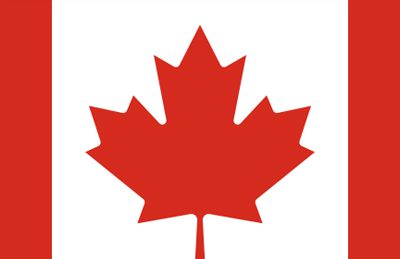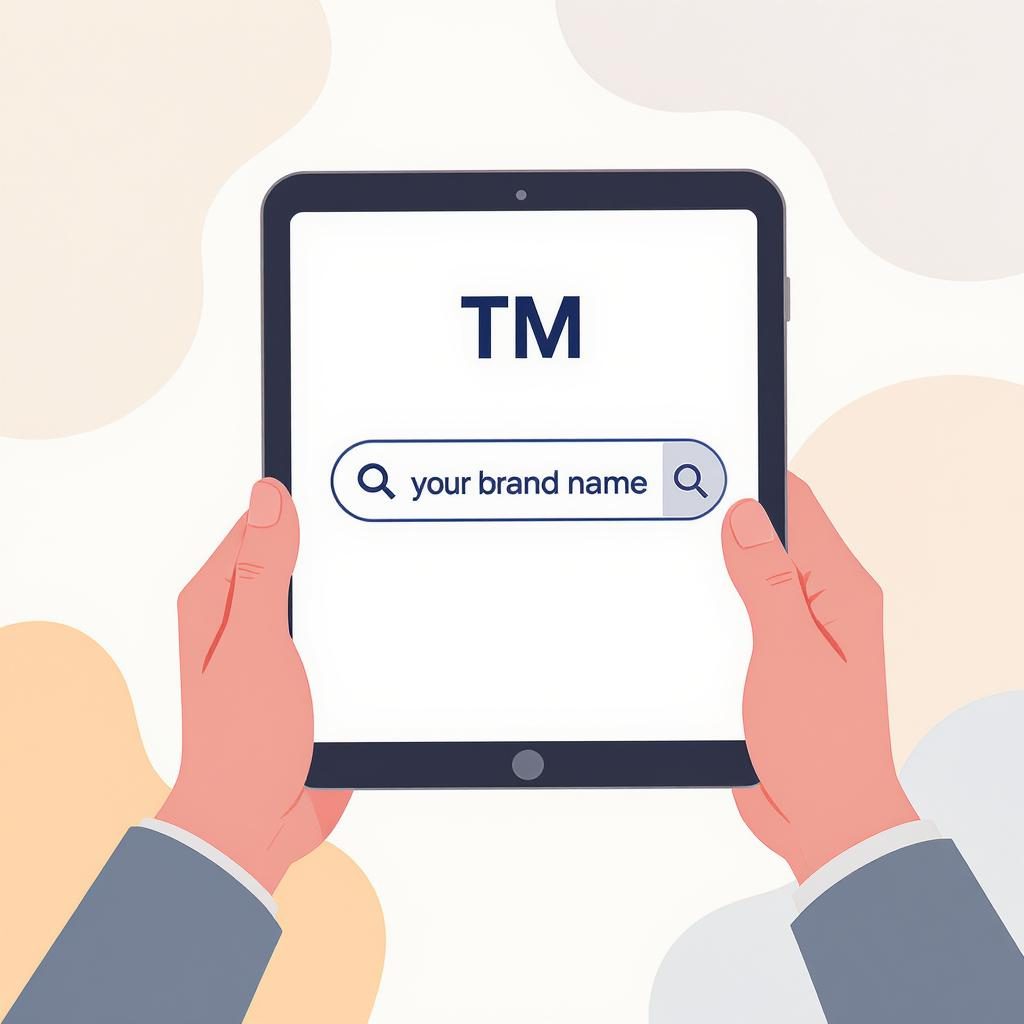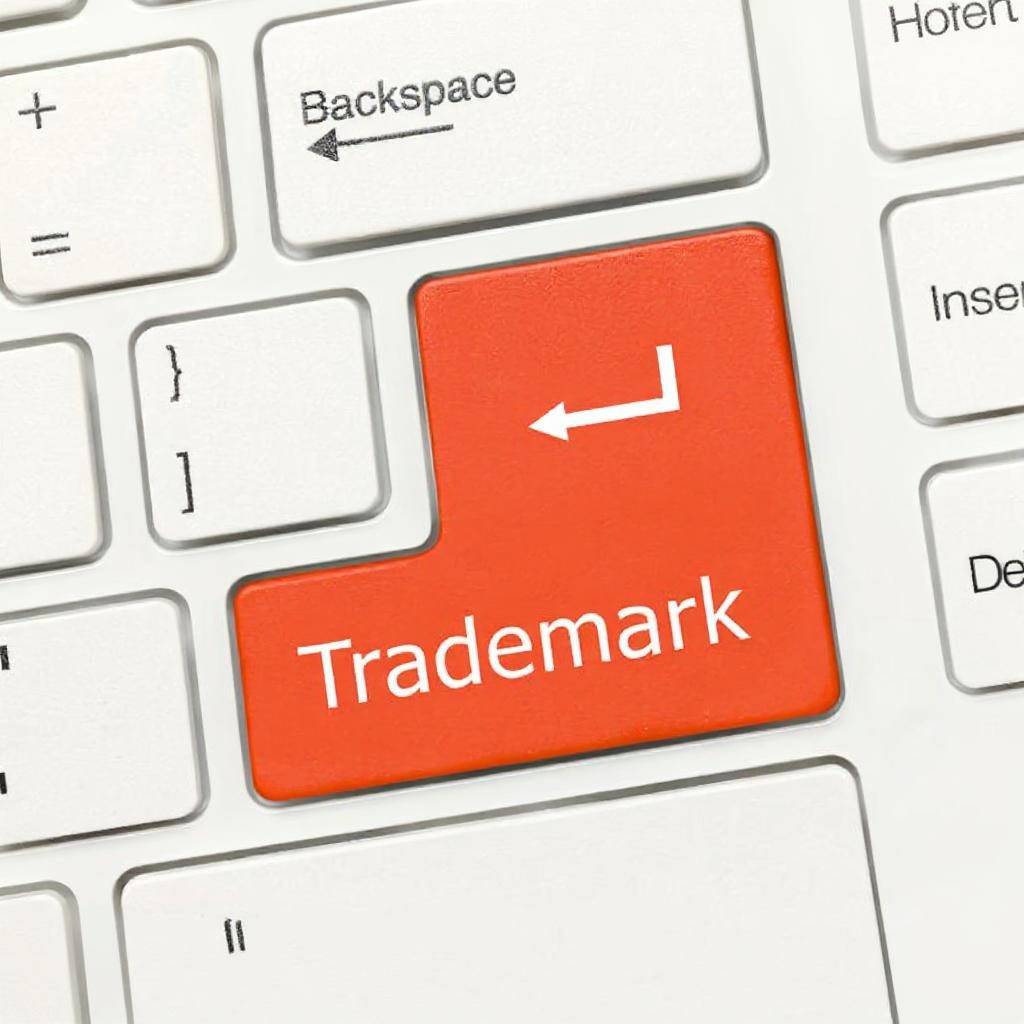
Brand Registration Guide in 2025
In the fast-evolving world of business and intellectual property, timing is everything. Whether you’re launching a startup, building an e-commerce empire, or growing a legacy brand, 2025 presents a rare


Ready to safeguard your brand in Canada? We’re here to help. Our team provides end-to-end trademark services nationwide, covering everything from Canada trademark search, filings, and renewals to handling opposition cases and cancellations. With experienced professionals and competitive rates, we make it easy to protect your intellectual property while staying within budget. Since Canada’s trademark laws were updated in 2019, the registration process has become more streamlined — but it also comes with new rules and procedures. Our experts closely follow these legal changes to ensure your trademark registration in Canada is completed accurately, efficiently, and with minimal hassle.
Once registered, Canadian trademarks must be renewed every 10 years to maintain protection.
At ( Company Name), we collaborate with a select team of trusted trademark agents to ensure your application is in expert hands. Our CEO, Anita, is a registered trademark agent herself, bringing years of experience to every file we handle. From preparing and filing your Canadian trademark application to managing oppositions and other proceedings, our team can take care of the entire process for you.
The prices are in USD$ for the Canada
Covers filing your application and reporting the progress all the way to registration. 2 classes included. This is our entry-level package.
Covers full trademark registration, including reporting and responding to non-substantive examiner’s objections and free re-filing.
Covers all aspects of trademark registration, including responding to all examiner’s objections and free re-filing. More free extras.
If you’re working within a limited budget.
If our complimentary trademark search showed no major obstacles to registration.
This package includes everything offered in our “SAIL THROUGH” package, plus a few valuable extras. It covers reporting and responding to non-substantive (procedural) office actions, filing a Statement of Use with specimens provided by the client when needed, and requesting any necessary extensions to file a Statement of Use. If your trademark is refused by the Trademarks Office, we also offer free re-filing under the same terms as our “SAIL THROUGH” package — meaning you’ll cover the government fees, while we’ll waive our professional fees. You can visit our FAQ section for full details about our re-filing process. This package includes up to 2 classes, and you can add additional classes for just $50 per extra class.
This package does not include government fees, responses to substantive office actions, opposition proceedings, or the additional free extras that come with our “BELLS AND WHISTLES” package.
This is our most popular option, providing peace of mind and budget predictability throughout the trademark process. It’s also an excellent choice if you’re filing for a brand new trademark that hasn’t been used yet.
This package offers advantages over the “SAIL THROUGH” package by including free handling of non-substantive office actions and the filing of a Statement of Use. Plus, if your trademark is refused, you’ll have the option to file for a different trademark with our professional fees waived—giving you greater flexibility and peace of mind throughout the registration process.
This package includes everything offered in our ‘ALL IN’ package, plus reporting and responding to all examiner’s objections. It also includes free re-filing if your trademark is refused. Re-filing will be handled under our ‘ALL IN’ package terms — you’ll be responsible for the government fees, while we’ll waive our professional service fees. For full details, please refer to our FAQ section.
The maximum number of classes: unlimited.
This package is recommended if our trademark search has identified potential obstacles to your registration or if you plan to file for multiple classes.
We handle all office actions at no additional cost. Furthermore, if your trademark is refused, you have the option to file a different trademark with our professional fees waived. This package offers complete peace of mind and budget predictability. Learn more about why this package is the best choice here.
If your trademark is refused,
We’ll file another – fee excused.
Trademark registration in the US
Starting January 18, 2025, the US government filing fee is US$350 per class when using the base application. This option allows you to select up to 15 items of goods or services per class from the pre-approved list provided by the USPTO.
If you prefer to use a custom description (free-form text) instead of the pre-approved list, the government fee increases to US$550 per class. Additionally, for free-form text exceeding 1,000 characters, an extra fee of US$200 will apply for each additional block of 1,000 characters.

Our professional fee to file a Statement of Use is US$250, plus US$50 for each additional class beyond two when you purchase our SAIL THROUGH package. However, if you select either our ALL IN or BELLS AND WHISTLES package, this service is included at no extra professional fee — giving you better value and added convenience.
Similarly, the professional fee to file an Extension of Time to file a Statement of Use is US$100 with the SAIL THROUGH package. Just like with the Statement of Use, this service is completely free of extra professional charges when you choose our ALL IN or BELLS AND WHISTLES packages.
The Canadian Intellectual Property Office (CIPO) has taken significant steps to modernize its trademark services. In a move to streamline processes and improve efficiency, CIPO’s Trademarks Office and Trademarks Opposition Board have introduced a new digital platform known as the Trademark Document Retrieval Service (TDRS).
Previously, CIPO relied on traditional mail for sending Office correspondence—a method that often led to delays and the risk of lost documents. With the recent switch to electronic communication, applicants and trademark agents can now receive updates much faster, improving overall processing times and minimizing administrative delays.
The TDRS offers a stable, high-performance cloud-based infrastructure that enhances how trademark information is accessed and shared. It mirrors the functionality of the USPTO’s Trademark Status & Document Retrieval (TSDR), allowing users to retrieve and view trademark-related documents online.
Now, in addition to viewing public trademark records, users can also access digital copies of correspondence, application filings, examiner reports, and registration details—all in one place. This digital access ensures better transparency and a more user-friendly experience for businesses and legal professionals navigating the Canadian trademark system.
For instance, a trademark application submitted in June 2024 was successfully registered by October 2024 after an expedited petition was filed. You can explore this case via CIPO’s public search portal:
👉 Trademark #2330580 – View Online
Click on “Documents” to view all related records made publicly available.
This transition to digital services is a major step forward for intellectual property management in Canada, promising faster turnarounds, greater document security, and improved access to trademark data for all stakeholders.
If you’re filing a trademark in Canada, it’s essential to understand how government fees work—because CIPO calculates them differently than most other jurisdictions, even though fees are charged “per class.
1. C$478.15 for the first class (approximately USD $330)
2.C$145.12 for each additional class (approximately USD $100)
While many countries lock in fees based on what you file, CIPO fees are based on what the examiner decides during examination, even if that differs from your original filing.
A mistake in class selection can lead to unexpected costs. That’s why it’s highly recommended to:
A Power of Attorney (POA) is a legal document that gives one person or entity (known as the Attorney or Agent) the authority to act on behalf of another person (called the Principal). This authority may extend to handling business matters, personal affairs, or legal representation—such as in trademark filings.
In the context of trademark law, a POA allows an attorney or trademark agent to formally represent you before the relevant Trademarks Office in your country or region. However, whether a signed POA is required depends on the jurisdiction:
In many countries, including:
United States
United Kingdom
European Union
Canada
Australia
A signed Power of Attorney is typically not required for a standard trademark application. The act of hiring an agent or attorney is seen as sufficient authorization to represent you in the application process.
In contrast, countries such as:
China
Mexico
Russia
India
Require a signed Power of Attorney (by the trademark owner or an authorized individual) before the trademark application can be filed or processed. Failing to submit a valid POA may delay or invalidate the application.
In the United States, a POA is generally not needed for filing. However, if you want to replace your current attorney with a new one, you must sign a new Power of Attorney to officially authorize the new attorney to take over the file and handle prosecution before the USPTO.
In Canada, a registered trademark must be renewed every 10 years, starting from the date of registration—not the filing date.
This renewal system is different from many other jurisdictions. For example:
In the UK and European Union, the 10-year renewal period is typically counted from the filing date.
In Canada, it’s based on the registration date, which often comes later due to a longer examination and approval process.
The Canadian trademark registration process can take a significant amount of time. To ensure that trademark owners get the full benefit of protection, the 10-year renewal period only begins once the trademark is officially registered.
Failing to renew your trademark on time can result in its expiration or removal from the register. To maintain your rights, ensure you keep track of your registration date and set reminders well in advance of the renewal deadline.
While filing a trademark in Canada can be a smart move for many businesses, there are certain situations where it may not be advisable. Below are key scenarios when you should reconsider or delay filing a Canadian trademark application:
If your main goal is to access the Amazon Brand Registry, Canada may not be the best jurisdiction. The trademark registration process in Canada can take up to 26 months, which is considerably longer than in other countries. Amazon often requires a registered trademark for brand registry eligibility, so filing in faster jurisdictions like the U.S. may be more strategic.
If you are aware of a competitor using a similar name or logo, or if a conflicting trademark already exists in the database, it’s risky to proceed. In this case:
Conduct a comprehensive trademark search first.
Consider modifying your trademark.
Or, rebrand entirely to avoid legal challenges or rejection.
Filing a trademark without a thorough search can lead to costly rejections or opposition later. A pre-filing clearance search helps you identify risks and assess registrability before spending time and money on an application.
Trademarks that are:
Generic (e.g., “Shoes” for footwear)
Purely descriptive (e.g., “Fresh Apples” for apples)
Immoral or offensive
…are likely to be refused registration by CIPO. If your brand falls into one of these categories, it’s best to refine the mark before applying.
If you’re just starting out and operating at a tiny scale, trademark registration may not be urgent. You may want to test your business model or brand viability first before investing in a formal application.
Trademarks are jurisdictional, meaning a Canadian trademark only protects you in Canada. If your primary customers are based in the U.S. or another region, you should file in those countries first. A Canadian trademark won’t protect your rights abroad.
Since August 3, 2019, the United States Patent and Trademark Office (USPTO) requires all foreign-domiciled applicants — meaning anyone based outside of the US — to appoint a licensed US trademark attorney for any filings and proceedings before the USPTO and the Trademark Trial and Appeal Board (TTAB).
We’ve got you covered. We work with a select network of trusted US trademark attorneys who handle filings on behalf of our international clients. Whether you’re starting a new application or already filed on your own, we can take over your case and assign a US attorney to represent you — and we do this at no extra cost.
Unlike many other firms that raised their prices after this rule change, we kept our fees consistent. In every country where we offer trademark services, we ensure your application is submitted by a qualified local attorney or trademark agent, so you’ll always receive proper legal representation.
When filing a trademark application, one of the most important steps is selecting the correct class or classes for your goods or services. Trademark classification is a standardized system used worldwide to group similar products and services into categories, called “Nice Classes,” numbered from 1 to 45.
Your trademark only protects the specific class(es) you register.
Selecting the wrong class can lead to rejection or limited protection.
Filing in multiple classes can increase government fees.
| Class | Category |
|---|---|
| 1 | Chemicals (industrial, agricultural) |
| 2 | Paints, varnishes, colorants |
| 3 | Cosmetics, cleaning products, perfumes |
| 4 | Fuels, oils, candles |
| 5 | Pharmaceuticals, supplements, disinfectants |
| 6 | Metal goods, safes, locks |
| 7 | Machines and machine tools |
| 8 | Hand tools, cutlery, razors |
| 9 | Electronics, software, downloadable media |
| 10 | Medical devices, sex toys |
| 11 | Lighting, heating, kitchen appliances |
| 12 | Vehicles and parts |
| 13 | Firearms, fireworks |
| 14 | Watches, jewelry, precious metals |
| 15 | Musical instruments |
| 16 | Paper goods, stationery, printed materials |
| 17 | Rubber, plastic, insulation materials |
| 18 | Leather goods, bags, pet accessories |
| 19 | Building materials (non-metal) |
| 20 | Furniture, home storage |
| 21 | Kitchenware, cleaning utensils |
| 22 | Ropes, tents, raw textiles |
| 23 | Threads, yarns |
| 24 | Fabrics, blankets, towels |
| 25 | Clothing, shoes, hats |
| 26 | Embroidery, hair accessories |
| 27 | Carpets, wallpaper |
| 28 | Toys, games, sports gear |
| 29 | Processed foods, dairy, meats |
| 30 | Baked goods, spices, coffee/tea |
| 31 | Fresh produce, pet food, live plants |
| 32 | Non-alcoholic drinks, juices, beer |
| 33 | Alcoholic beverages (excluding beer) |
| 34 | Tobacco, vapes, matches |
| Class | Category |
|---|---|
| 35 | Retail, business consulting, marketing |
| 36 | Financial and real estate services |
| 37 | Construction, maintenance, installation |
| 38 | Telecom, video and radio broadcasting |
| 39 | Transportation, storage, travel |
| 40 | Manufacturing, material treatment, recycling |
| 41 | Education, training, publishing, events |
| 42 | IT services, SaaS, software development |
| 43 | Hotels, restaurants, catering |
| 44 | Medical, dental, beauty care |
| 45 | Legal, security, personal and social services |
Before filing, it’s smart to conduct a search for existing trademarks similar to yours. This helps avoid costly issues later — like rebranding products or packaging. At Trademark Angel, we offer a free initial search to assess the registrability of your mark.
If your search is clear, we’ll gather details to draft your application:
Trademark owner’s name
Whether it’s a word mark or logo
List of goods/services and their classes
Whether you’re filing under “Actual Use” (already selling) or “Intent to Use” (planning to sell)
Actual Use: You’ll need to submit a specimen (unedited photo) showing your mark on your product or service materials, plus your first sale date.
Intent to Use: You’ll file a Statement of Use later, once you start using the mark in commerce.
USPTO Fee: $350 per class (not included in our packages)
We file your application with the USPTO, and you’ll get an application serial number to track your status.
⚠️ Important: No changes can be made to your mark or goods after filing.
About 3–4 months later, a USPTO attorney examines your application.
If there are issues (like conflicting marks or unclear descriptions), an Office Action will be issued. You must respond within 6 months.
If approved, your mark is published in the Official Gazette for a 30-day opposition period.
Rarely, someone may oppose your mark. If so, we can connect you with a specialist.
If no opposition is filed (or after resolving one), Intent to Use applications receive a Notice of Allowance.
Within 6 months, you must file a Statement of Use and specimens showing the mark on your products/services.
Fee: $150 per class
Extensions available ($125 per class) if you’re not ready within 6 months — up to 5 extensions.
✅ If no opposition and (if needed) Statement of Use is filed and accepted:
Actual Use applications get a registration certificate 6–8 weeks after publication.
Intent to Use applications get a registration 4–8 weeks after Statement of Use acceptance.
🕑 Timeline: 8 months (best case) to 2+ years (if delays)
To keep your trademark active:
Between Year 5–6: File Section 8 Declaration ($325 per class)
Optional: File Section 15 Declaration ($250 per class) for incontestability
Between Year 9–10: File Section 9 Renewal ($325 per class)
✅ Keep using your trademark correctly to maintain protection.
This is the legal name of your business entity.
It’s registered with your state, provincial, or national government.
It appears on legal documents like incorporation papers, tax filings, and contracts.
Example:Microsoft Corporation
Important:
One company can own several brands and operate under multiple names.
This is the name you use in the marketplace to sell your products or services.
It may or may not be the same as your company name.
If it’s different, you typically need to register it as a “Doing Business As” (DBA) or “Trade Name.”
Example:Microsoft (used publicly by Microsoft Corporation)Skype (also owned and operated by Microsoft)
This is your address on the internet — the web address people type to visit your website.
It doesn’t give you trademark rights by itself, but it’s a valuable part of your brand identity.
Example:www.microsoft.comwww.skype.com
A single company can own multiple domain names for different brands, campaigns, or products.
A trademark is a legally protected brand identifier.
It can be a word, phrase, logo, symbol, sound, color, or even a scent that distinguishes your product or service from others in the market.
Registered trademarks give you exclusive rights to use that mark in connection with specific goods or services.
Example:MICROSOFT (word mark)
The Windows logo (logo mark)
The Skype icon (logo mark)
Incorporating your business or registering a company name does not automatically give you trademark rights to use that name as your brand.
For example, in the US, each state has its own rules for business name registration. If you register an LLC named Coolapples LLC in Delaware, that registration only applies in Delaware. Another business could register Coolapples LLC in Indiana or any other state without infringing on your state-level business name.
This means your state-level company name registration does not protect your brand nationwide.
If you want exclusive, nationwide rights to your brand name—especially if you plan to expand beyond one state—you should register a federal trademark with the United States Patent and Trademark Office (USPTO). This trademark gives you the exclusive legal right to use your brand name for your goods or services across the entire country.
Similarly, if you’re in Canada or Australia, registering a trademark with the respective national trademark office will give you country-wide protection and make it easier to sell, license, or enforce your rights to your brand.
No, use of the trademark in commerce is not required before filing your application if you file based on an “Intent to Use” basis. This means you can file your trademark application before you actually start using it in the marketplace. However, you must eventually put the trademark to use and submit a Statement of Use along with evidence (called specimens) showing actual use before the trademark can be registered.
Foreign applicants may also file based on a foreign registration as their basis without prior US use.
Yes, use is mandatory after registration. You must continue using the trademark in commerce to maintain your rights. The USPTO requires you to file an Affidavit of Use (also called a Section 8 Declaration) between the 5th and 6th year after registration to prove your trademark is still in use. If you fail to file this affidavit, your trademark registration will be automatically cancelled.
Additionally, if someone proves your trademark is no longer in use, they can file a petition to cancel your registration.
Yes, you can legally use a trademark even if it isn’t registered. In fact, in many countries like the US, trademark rights are based primarily on actual use in commerce, not just registration. This is called common law trademark rights and gives you some protection within the geographic area where you use your mark.
However, there are important risks:
If someone else has already been using a similar or identical mark before you (whether registered or not), you may be infringing on their rights and could face legal action.
Without registration, your rights are limited and harder to enforce nationwide or internationally.
Registration provides stronger legal protection, public notice, and easier enforcement.
United States: 30 days from publication
Brazil: 60 days from publication
Canada, Australia, New Zealand: 2 months from publication
South Korea: 2 months from publication
United Kingdom: 2 months (can extend to 3 months on request)
Japan: 2 months from publication (trademark published twice: after filing and after registration)
Germany: 3 months from publication (publication occurs after registration)
European Union: 3 months from publication
China: 3 months from publication
India: 4 months from publication
However, there are important risks:
If someone else has already been using a similar or identical mark before you (whether registered or not), you may be infringing on their rights and could face legal action.
Without registration, your rights are limited and harder to enforce nationwide or internationally.
Registration provides stronger legal protection, public notice, and easier enforcement.
Trademarks may be filed at the state or federal level. State trademarks protect your mark in a specific state while federal trademarks protect your mark in all the states. State trademarks generally provide less legal protection than federal trademarks. Businesses operating in only one state should trademark in that state. Businesses operating in interstate commerce may file for a federal trademark. For example, if you operate a restaurant or a hair-dressing salon in Florida, you are not eligible for a federal trademark. In this case, you should apply for a trademark in the state of Florida. However, if you have two or more restaurant locations in more than one state, in our case, one in Florida and one in Georgia, you are eligible for a federal trademark. A business intending on expanding nationally or internationally should conduct a trademark search and file a federal trademark as soon as possible.
Trademarks can last indefinitely — as long as they are properly maintained and renewed on time. The key requirement is continued use of the trademark in connection with the goods or services for which it was registered.
Here’s how it works in different countries:
United States:
A trademark must be renewed every 10 years from the registration date. Additionally, between the 5th and 6th year after registration, you must file a Declaration of Use (affidavit of use) to keep the registration active.
European Union, Germany, United Kingdom, India, and Australia:
Trademarks must be renewed every 10 years, with the 10-year term starting from the application date.
China:
Renewal is required every 10 years, counted from the registration date.
Canada:
Trademarks must be renewed every 10 years, counted from the registration date. (Note: this was changed from a 15-year term to 10 years in June 2019.)
| Rank | Country | Average Time to Register | Notes |
|---|---|---|---|
| 1️⃣ | Germany | 1–3 months | Fastest. Can register within 1 month with accelerated examination. Occasionally unpredictable. |
| 2️⃣ | United Kingdom | 3.5–4 months | Consistent and low government fees. |
| 3️⃣ | European Union (EU) | 3.5–7 months | 3.5–4 months via “fast-track”; regular filings take 6–7 months. Higher government fees. |
| 4️⃣ | Mexico | 4–8 months | Can fluctuate; some applications take longer. |
| 5️⃣ | Australia | 7.5–12 months | Most trademarks register within a year if no objections. |
| 6️⃣ | China | 9–12 months | Appeals can delay by 8+ months. Improving timelines. |
| 7️⃣ | India | 10–12 months | Similar to China in average timelines. |
| 8️⃣ | United States | 12–14+ months | Often delayed by office actions. Can exceed a year easily. |
| 9️⃣ | Japan | 10–14 months | Fairly steady timeline. |
| 🔟 | Brazil | 12–18 months | Among the slower countries for registration. |
| 1️⃣1️⃣ | Canada | 36–42 months | Slowest. Pandemic delays made it worse. Expected to improve post-Madrid Protocol membership. |
A specimen of use is real-world proof showing how your trademark is actually used in connection with the goods or services you provide in the marketplace. It’s a requirement when filing certain types of U.S. trademark applications and during post-registration maintenance.
You must show your trademark directly on the product or its packaging. Acceptable specimens include:
Product labels
Tags attached to the product
Product packaging
Instruction manuals
Photographs showing the product with the mark visible
🔴 Not allowed: Drawings, mockups, or promotional ads alone — they don’t count for goods.
You need to prove your mark is publicly used when offering your services. Acceptable specimens include:
A screenshot of your website showing the trademark prominently (usually in the header) along with a description of your services.
Brochures, flyers, or online ads offering the services with your mark clearly visible.
Business cards or signage photos displaying your trademark alongside the services provided.
Submitting the correct type of specimen is crucial — the USPTO can refuse your application if the specimen doesn’t meet their requirements. It must reflect how your trademark appears in actual, day-to-day commercial use.
A specimen of use is real-world proof showing how your trademark is actually used in connection with the goods or services you provide in the marketplace. It’s a requirement when filing certain types of U.S. trademark applications and during post-registration maintenance.
You must show your trademark directly on the product or its packaging. Acceptable specimens include:
Product labels
Tags attached to the product
Product packaging
Instruction manuals
Photographs showing the product with the mark visible
🔴 Not allowed: Drawings, mockups, or promotional ads alone — they don’t count for goods.
You need to prove your mark is publicly used when offering your services. Acceptable specimens include:
A screenshot of your website showing the trademark prominently (usually in the header) along with a description of your services.
Brochures, flyers, or online ads offering the services with your mark clearly visible.
Business cards or signage photos displaying your trademark alongside the services provided.
Submitting the correct type of specimen is crucial — the USPTO can refuse your application if the specimen doesn’t meet their requirements. It must reflect how your trademark appears in actual, day-to-day commercial use.

In the fast-evolving world of business and intellectual property, timing is everything. Whether you’re launching a startup, building an e-commerce empire, or growing a legacy brand, 2025 presents a rare

In today’s competitive business environment, protecting your brand identity is not just a legal necessity—it’s a strategic move that can have long-lasting impacts on your business’s success. One of the

In today’s fast-paced and highly competitive business world, building a brand that stands out is no easy task. From your logo and business name to your product packaging and slogans,

If you’re a seller looking to protect your brand and gain a competitive edge on Amazon, enrolling in Amazon Brand Registry is a must. This step-by-step guide will walk you
Trademark Focus is a trusted trademark registration firm with more than 10 years of expertise. We specialize in handling trademark applications and protection services across Canada, the US, and internationally.
No.518, Jianshe Avenue, Jianghan District, Wuhan, Hubei Province